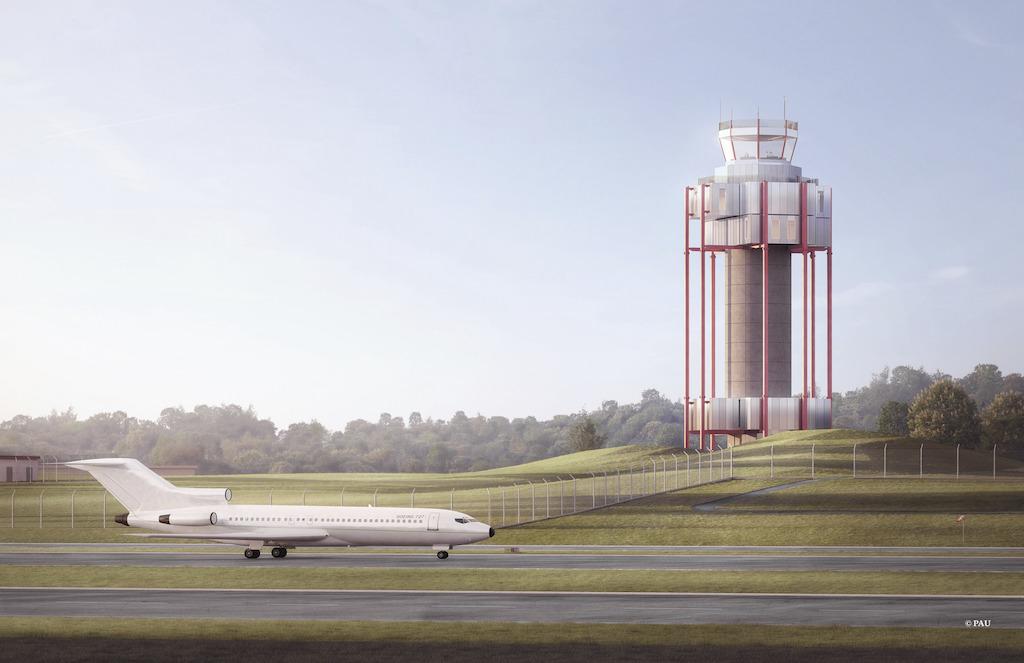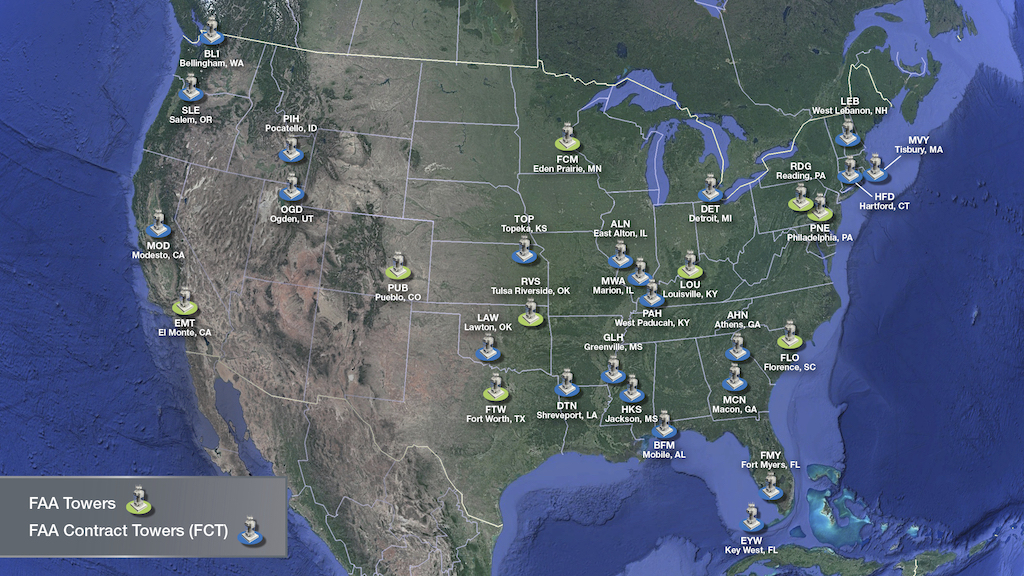
An artist's rendering of the new tower design created by New York City-based PAU.
The FAA has chosen a “sustainable” design for new air traffic control towers that will serve mainly municipal and smaller airports, the agency announced April 20.
Built of standardized elements but ranging in height from 60 ft. to 119 ft. depending on their location, the towers designed by Practice for Architecture and Urbanism (PAU) of New York City would incorporate all-electric building systems, thermally efficient facades, high-recycled steel and metal products, renewable mass timber and ground-source heating and cooling in some environments.
An initial set of 31 towers at candidate airports would replace existing towers that are functioning beyond their intended design life, the FAA said. The agency has set aside $500 million from the 2021 Bipartisan Infrastructure Law to support site evaluation, preparation and early construction activities, with a first groundbreaking anticipated in 2024.
“These new air traffic control towers will mean that smaller airports can handle more flights, more sustainably and more affordably,” said U.S. Transportation Secretary Pete Buttigieg. “I look forward to seeing this design go from the drawing board to construction sites across the country, helping our nation’s airports support more travelers, grow their local economies and prepare for the future of low-carbon aviation.”
Tower Selection Criteria

In a fiscal 2023 budget document, the FAA says the initial set of 31 towers being evaluated for replacement were chosen based on criteria that includes them being FAA-owned and more than 40 years old. They are standalone buildings with no co-located Terminal Radar Approach Control facility, serving airports with less than 150,000 operations per year.
A map the FAA provided of the initial candidate airports includes both FAA-operated and contract towers.
“The new air traffic control towers are standardized yet highly flexible, allowing for customizable colors and materials to meet the needs and reflect the local identities of their respective sites,” PAU states in background information. “The interior spaces prioritize the health and wellness of air traffic controllers, providing integrated daylighting and comfort systems and fresh air ventilation to create the most hygienic environments possible, and incorporating materials and finishes that ensure ease of maintenance over extended periods of time.”

